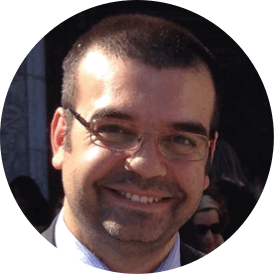The Transdisciplinary Method
- Michael Panao
- 30 de nov. de 2016
- 2 min de leitura

In a previous post I made a personal interpretation of Transdisciplinarity and shared some of the characteristics demanding from us when a group follows such approach to achieve the unity of knowledge. But what is the method?
According to Basarab Nicolescu, there are three essential features.
1. Levels of (interpreting) Reality
2. The Third (or Middle) Included
3. Complexity
First of all, it is important to distinguish "Real" from "Reality". Nicolescu says
"We have to distinguish, in order to avoid further ambiguities, the words ―Real and ―Reality. Real designates that which is while Reality is connected to resistance in our human experience. The ―Real is, by definition, veiled for ever (it does not tolerate any further qualifications) while ―Reality is accessible to our knowledge. Real involves non-resistance while Reality involves resistance."
The first sign that we make of understanding the "graspable" Reality, historically, is he distinction between the visible and the invisible. An animal is seen and hunted, an idea is unseen and shared. And the idea of resistance is well expressed in Jacob's dream of a ladder between earth and heaven (Gn, 28, 10-12). For those who have experience in climbing, when we start it's still easy, but as we keep climbing our muscle get tired and a similar passage in the beginning become hard. Everything becomes a matter of overcoming resistance.
Reality is One with multiple levels. Nicolescu doesn't specify, but I think these are multiple levels of interpretation. Otherwise, we may risk of considering multiple realities leading to a certain relativism. This figure, adapted from Nicolescu's book "We, the particle and the universe", explains the concept.

Examples of different levels of interpreting reality are the several disciplines. Each is a distinct form of viewing reality. Chemistry is not the same as physics, biology, philosophy or Latin. Even if we group the first three in Natural Sciences, and the remaining in Humanities.
The second essential feature, also represented in the figure, is the "third included", or the "hidden middle". The idea is simple. Contradictions often happen within a level of interpreting reality. For example, a photon. On the level of continuity of matter, a photon is a paradox since it behave like a particle, but also shows a wavy behavior. However, a wave is not a particle. So, how do we resolve this duality? Thanks to Planck's intuition of the quantum which is at the level of interpreting reality of discontinuity of matter, it is possible to explain why a photon is both particle and wave. The quantum is the "third included" at another level of interpreting reality. This feature opens our mind to a more universal understanding of the world. And it is the root of stating "there are no contradictions".
The third essential feature is complexity. The structure of level of interpreting reality is complex. Why? According to Nicolescu, each level is what it is because all other level coexist simultaneously. Ultimately, this means it is not possible to understand one level of interpreting reality, without "seeing" in it all other known levels. Each level doesn't exist by itself, but implies the existence of others.
I'll try to develop each feature in more detail and share my thoughts on their contribution to a new evolutionary path of our universities.







Comentários